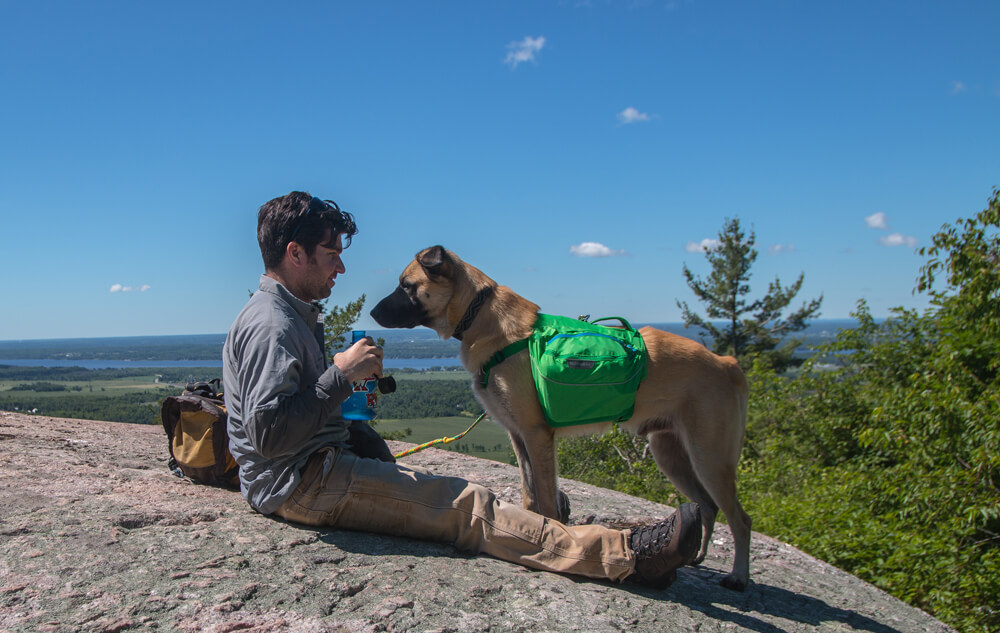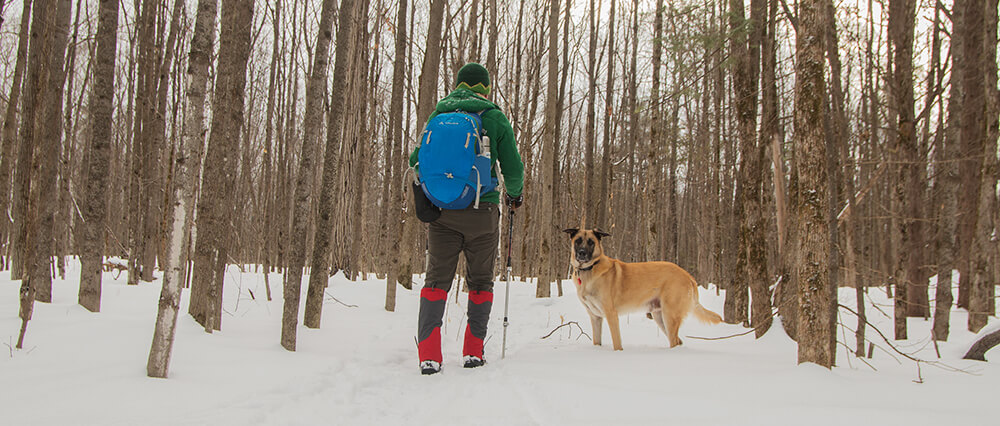
I grew up in Toronto, Canada, where winters over the last decade seemed to mostly hover around freezing, with a mix of rain and snow. Two years ago, I moved to Gatineau, Quebec, across the provincial border from Ottawa, Ontario. Winters here have proven to be far colder, with wind chill factors often dipping down to -40 degrees Celsius (and Fahrenheit). In both cases, I am a firm believer of the adage that “there’s no such thing as bad weather, just bad clothing,” though I’ll add bad equipment to that concept.
Being prepared for outdoor adventures requires a few extra steps, no matter the kind of winter you get. Below are some key considerations I’ve learned based on my own experience. Be sure to check in with local outdoors clubs if you’re uncertain about specific conditions where you live and play.
As with summer adventures, preparation starts before you head out the door. I’ve got a day pack that I use year-round, including much of what goes inside. Winter adventures demand I add some additional gear to be ready for colder, variable conditions.
Everything goes into a comfortable day-pack. For over a decade, I relied heavily on a Vaude Sierra 25L pack for all of my day trips, and as part of a bike-packing setup. I’ve finally replaced it with a new Vaude pack, the Bike Alpin 25+5. The new pack is lighter and can expand to a 30L volume – key in winter, when you need a little extra room. It’s also manufactured using Vaude’s Green Shape process that considers environmental criteria starting with design, material selection, manufacturing, use and care, and finally recycling and disposal.
Details of the key essentials can be found over at Adventuresmart.ca. I augment the list in the following ways for winter day hikes.
First Aid Kit. The kit I carry is made for 1-2 people for a weekend of fun. I’ve bolstered the kit by including some medications (Ibuprofen, Loperamide, Antibiotic cream, and water treatment tablets). I often hike with my dog, so I’ve also got two rolls of cohesive bandage material. This is a sort of tape that sticks to itself but not flesh or fur, which makes it great for both of us. Gauze, band-aids, scissors, and tick tweezers are some of the other items in the kit. In winter, I also add a couple packs of chemical hand warmers.
Navigation. I prefer a map and compass. I grew up learning how to use these, and since neither uses batteries, I know I can count on them at any time. A heavy-duty freezer ziplock is a cheap and easy map case. If you prefer a GPS or other electrical devices, remember that batteries drain more quickly in the cold, so bring extras and keep them inside an insulated jacket.
Fire-making supplies. My summer kit of matches, lighters, and fire starters is a great start. I always double check things in the fall to make sure it’s all in good shape. I’ll also add a small pot, and a candle lantern with a fresh candle. The first gives me a way to melt snow, and the second provides a windproof source of warmth and light.
Pocket Knife. This doesn’t change seasonally. I carry an original Leatherman because it’s bomb-proof, and can be used in a variety of ways (needle-nose pliers can in a pinch serve as a pot gripper). Fall and Spring are great times to do full maintenance to make sure it all operates well, though I’ll be sure to sharpen the knife more regularly. Dull knives are dangerous.
Signalling Device. I’ve always preferred whistles and rely on Fox 40 Classic whistles. Their volume and tone are penetrating in almost any weather. A mirror is great if sightlines are good, but winter storms can move in quickly, blocking out light and obscuring vision. The whistle is strapped to a shoulder strap on the pack so I can blow into it without having to dig it out of a pocket.
Light Source. Extra batteries are vital in winter. Be sure to carry them in an interior pocket so your body heat keeps them warm. I also carry my headlamp inside my jacket during the day for the same reason.
Emergency Shelter. Year-round, I carry an emergency blanket that is orange on one side, and foil on the other. In winter, I add a small tarp and enough rope to be able to create a shelter from wind, rain, and snow.
Extra Food and Water. I carry winter water supplies in Nalgene bottles that I fill with hot water. I use an insulated bottle sleeve to carry one (I happen to use a LowePro camera lens pocket, but there are ones made specifically for bottles). I’ll often carry a thermos full of hot water, or chicken stock on the coldest outings. The hot water can be poured into dehydrated meal packs, or used to make ramen. Snickers bars are also on hand, but when it’s really cold, keep them in your jacket. Pound for pound, they have a lot of calories. I wouldn’t try living on them over the long term, but they’re great for extra energy.
Extra Clothing. In the winter, I include both a goretex shell jacket and pants, extra socks, extra mitts and a down pull-over. These replace a lighter jacket that I use in warmer months.
Sun Protection. It’s easy to remember this in the summer but can often be forgotten in the winter. Yet fresh snow can reflect even minimal sunlight. Because creams are tough to manage in below zero temps, I’ll apply sunscreen at home, but use good sunglasses and a face covering to help protect any exposed skin. I also use a lip balm with sunblock built in since winter can be hard on your lips.
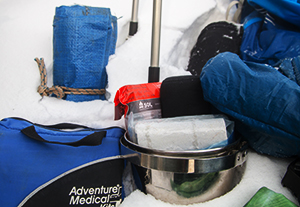
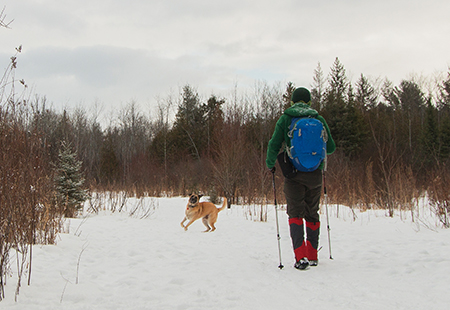

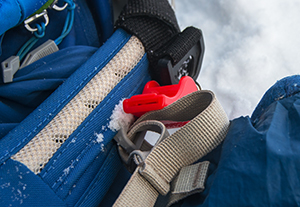

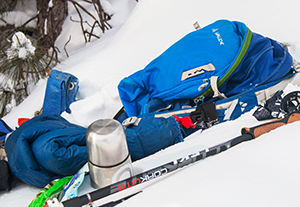
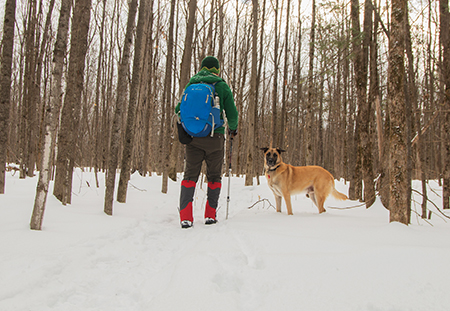
Be sure that you’ve got everything you need before you head out into the winter seeking adventure. Hopefully, you won’t need any of it, but if you do, you’ll be glad you have it.
Words by Dean Campbell


